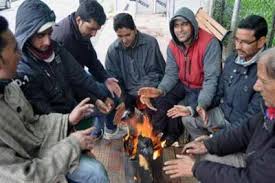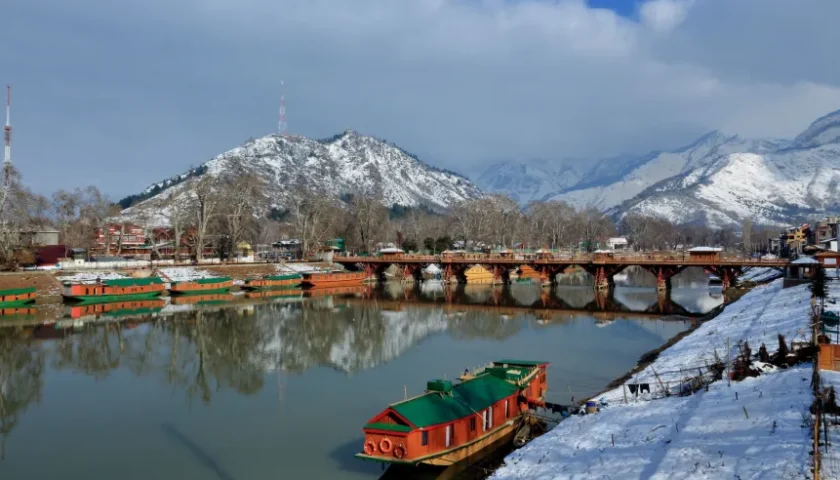On January 18, at minus 4.2 degrees Celsius, Srinagar for the first time this winter was colder than Pahalgam which recorded a warmer minus 2.7.
 However the following day temperature in the summer capital soon zoomed to 13 degrees way above the historical average of 5 degrees.
However the following day temperature in the summer capital soon zoomed to 13 degrees way above the historical average of 5 degrees.
These are some of the anomalies that are becoming normal to changing weather pattern in Kashmir. This year Chilai Kalaan, the traditional 40 days harshest period of winter, is basking in sunlight. The India Meteorological Data (IMD) for the week between 07 to 13 January shows anomaly of -77 percent as the state received 4.6 mm of rainfall equivalent of snowfall against the average of 19.7 mm.
“These are worrying signs. Like last year Chilai Kalaan is also expected to go snowless in the current season,” said Shakil Romsho, head of Earth Sciences department in Kashmir University. “This is the pattern consistent with climate change and if things go as such, expect the worse.”
Director MeT office Sonam Lotus agrees that climate change is at play, but feels that there can be a multitude of players. “We are witnessing dry winter comparatively. Against the average of 56 mm rainfall and snowfall we have received just 19 mm,” said Lotus. “At higher reaches we had some rainfall/ snowfall. However January as such is likely to be dry and we are expecting snowfall in February. Climate Change is definitely here but can’t say with authority that everything is caused by it.”
Experts believe that the changing weather pattern will have far reaching consequences on Kashmir. “Other places have man-made dams whereas we have glaciers and accumulated snow that release water when it is needed for agriculture and drinking purposes particularly in summers,” said Romsho. “Now the increasing winter temperature melts these glaciers and prevents accumulation of snow and it has the potential to spell a disaster for water availability during summers.”
Against the need of water for agriculture during June, most of the snow starts melting by March. “Even last year we had flood situation in March,” said Romsho. “Such a temperature increases the likelihood of floods as well as other extreme weather situations.”
The experts came down heavily on government on giving a lip service to climate change as no credible study is being undertaken. “We cannot prevent such a change but atleast we can prepare for it,” said Romsho. “Take up scientific studies, suggest recommendations and make people aware of the situation. But nothing is being done.”
Romsho came down heavily on the Climate Change report prepared by state government, which in an ideal situation should have been peer reviewed. “There is no work on economic impact or health risks posed by climate change,” said Romsho. “Studies show that vector borne diseases will increase in Kashmir as temperature increases.”
Romsho asked the government to take lead from recent Paris Climate Change summit. “We can work towards decreasing pollution and bring down the level of soot that adds to glacial melt,” said Romsho.
The experts believe that Kashmir valley will experience an increase of temperature by 3 to 4 degrees and urban dwellers would have to jostle with outside tourists to witness snowfall in Gulmarg and Pahalgam.
Srinagar has weather data of 127 years which clearly indicates that there is some anomaly going on. “Few decades back several feet of snow and sun hiding behind clouds for weeks was a normal during Chilai Kalaan, but that looks like a dream,” said Romsho.




